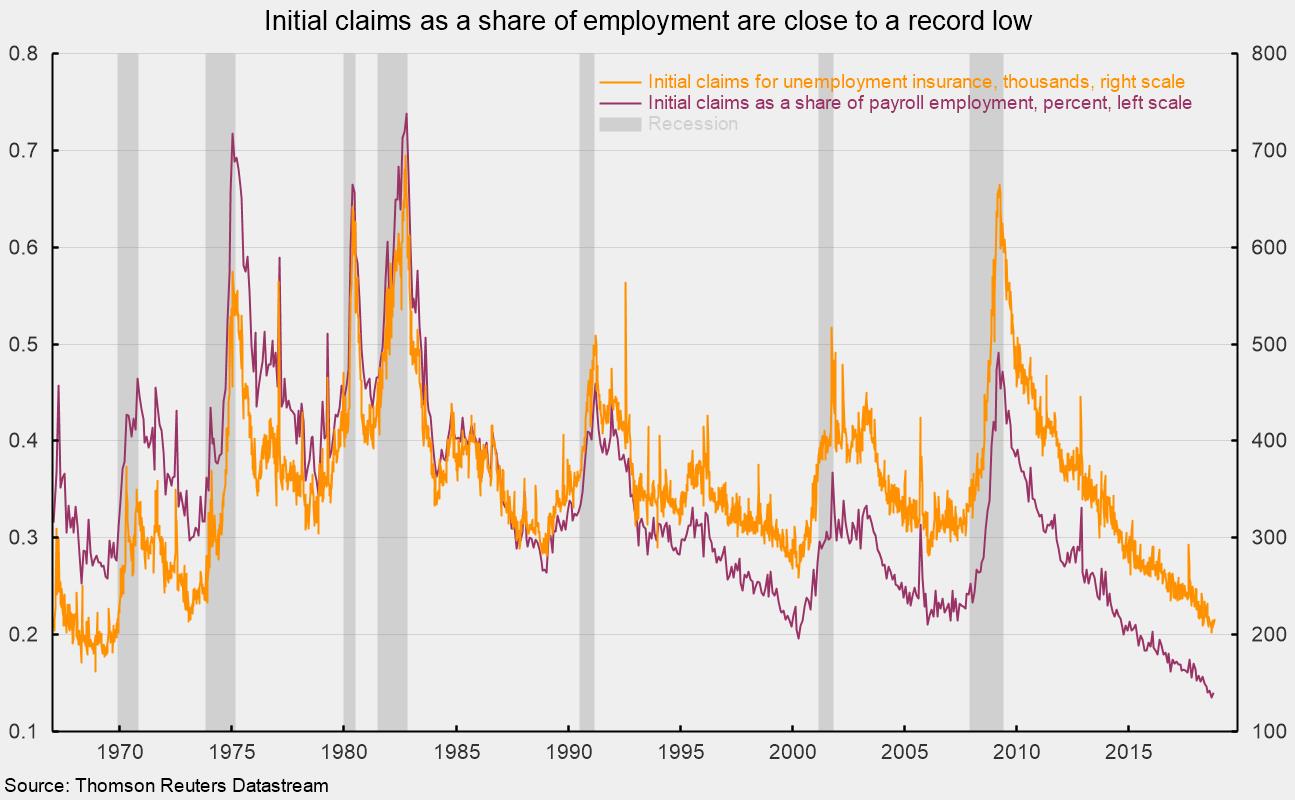Initial Claims Hold Near Record Lows While Consumer Credit Growth Slows
The latest data on new filings for unemployment insurance suggest the labor market remains tight. Data from the Employment and Training Administration within the Department of Labor show initial claims for new unemployment insurance were down 1,000 for the week of November 3 to 214,000. Using a four-week average to smooth out weekly volatility, the latest average came in at 213,750, down from 214,000 in the prior week. A level of claims below 300,000 is considered consistent with a strong labor market.
Initial claims have been bouncing around at the lowest levels since the 1970s. When measured as a percentage of payroll employment, claims are about 0.4 percent, near record-low levels and well below the levels seen in the 1970s (see chart).
Consumer credit rose 3.3 percent in September following a 7.0 percent gain in August. Over the past year, total consumer credit outstanding is up 4.8 percent. Consumer credit growth has been relatively modest in the current expansion, posting a five-year annualized growth rate of 5.3 percent through September. In previous expansions, five-year growth rates have often exceeded 8 percent and have been as high as 12 percent.
Among the details, revolving credit (primarily credit cards) fell 0.4 percent in the latest month while non-revolving (primarily auto loans and student loans) rose 4.7 percent. Over the past year, revolving credit is up 3.7 percent, the lowest since October 2016, while non-revolving credit is up 5.2 percent, the fastest pace since August 2017.
The strong labor market continues to support consumer income and spending and helps restrain the pace of credit growth. However, overconfidence in prospects for income gains can also contribute to overleveraging (for consumers as well as businesses). Therefore close monitoring of credit conditions and credit growth remains extremely important.






